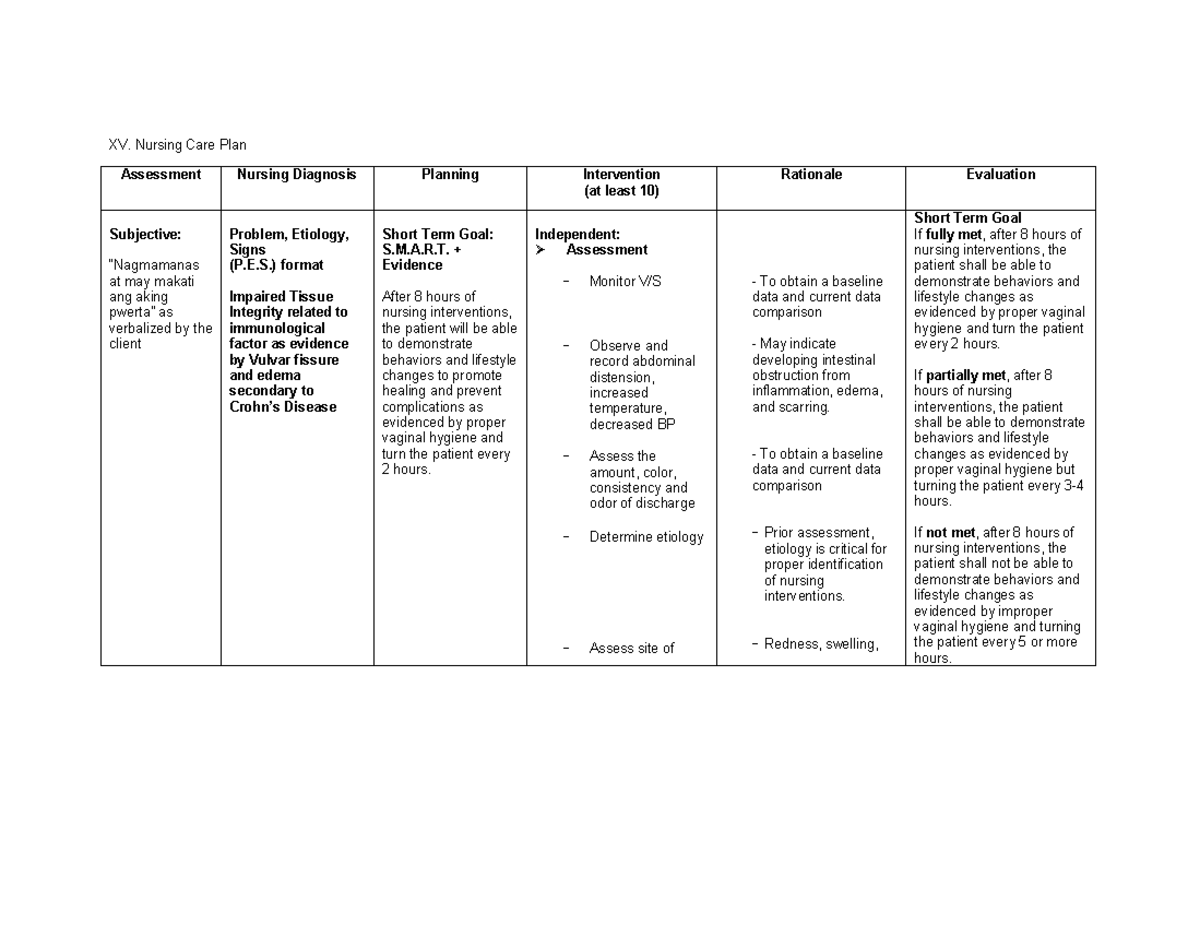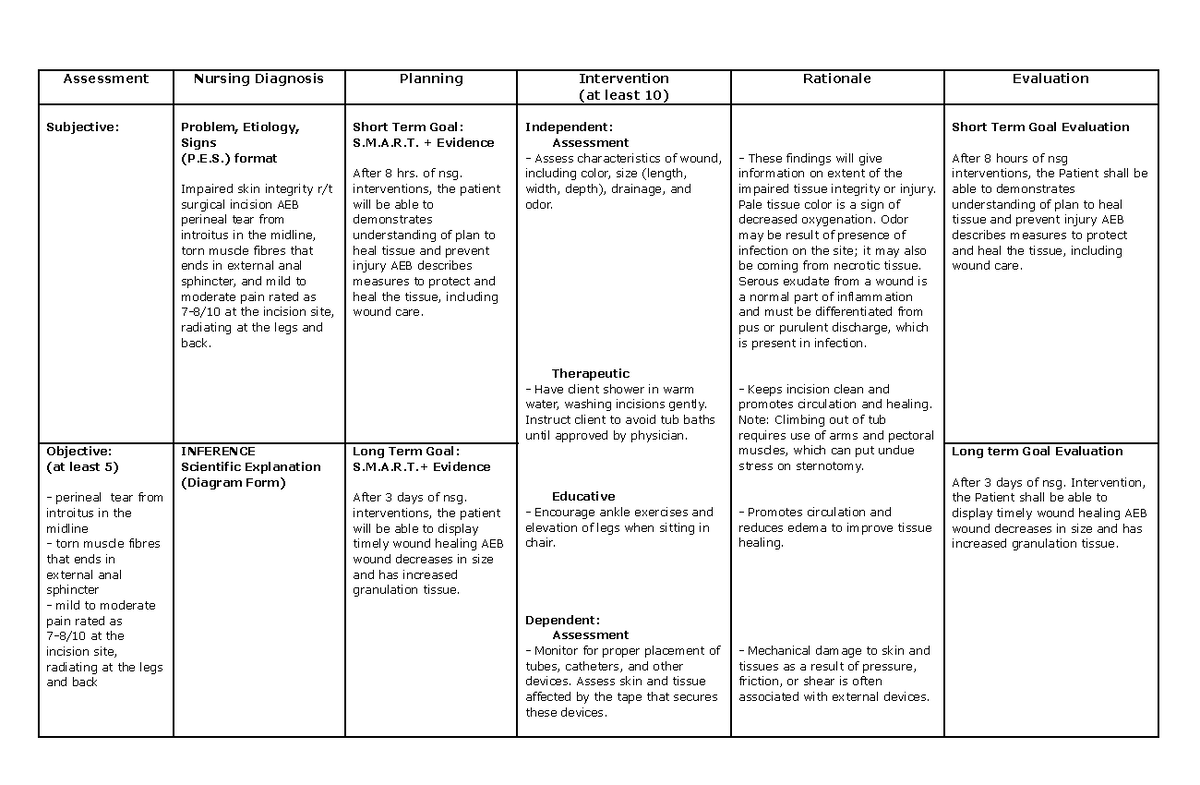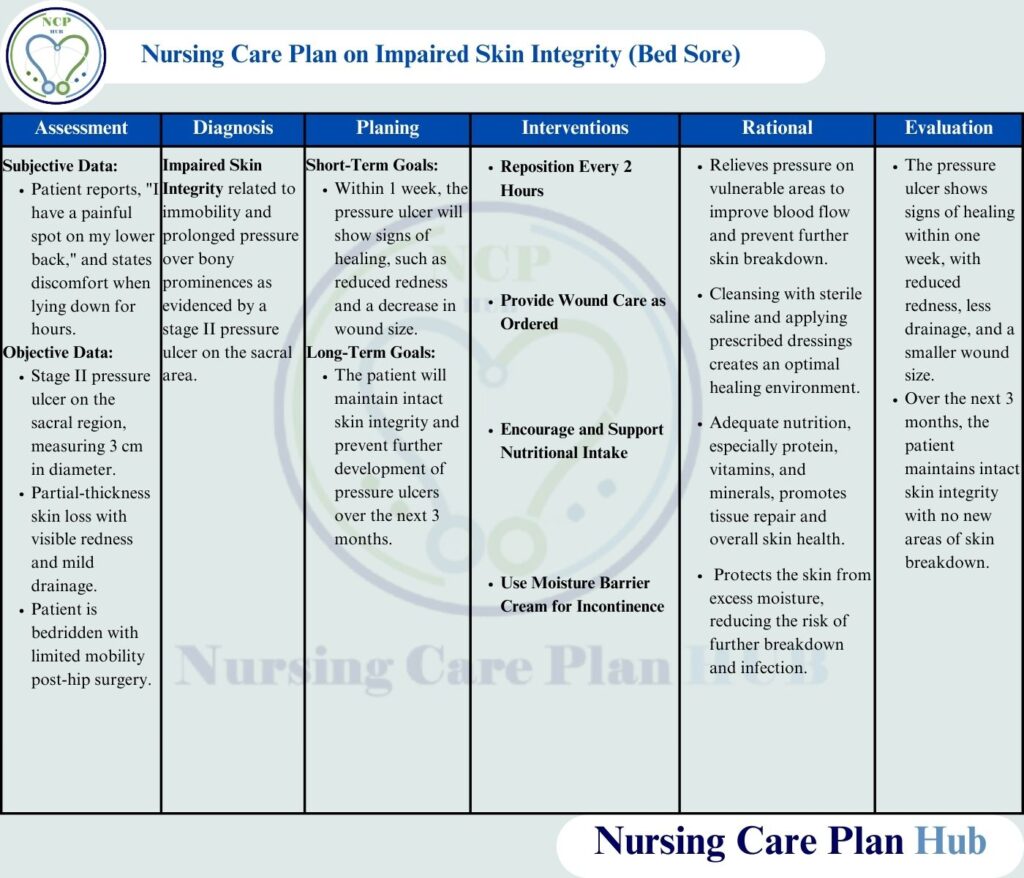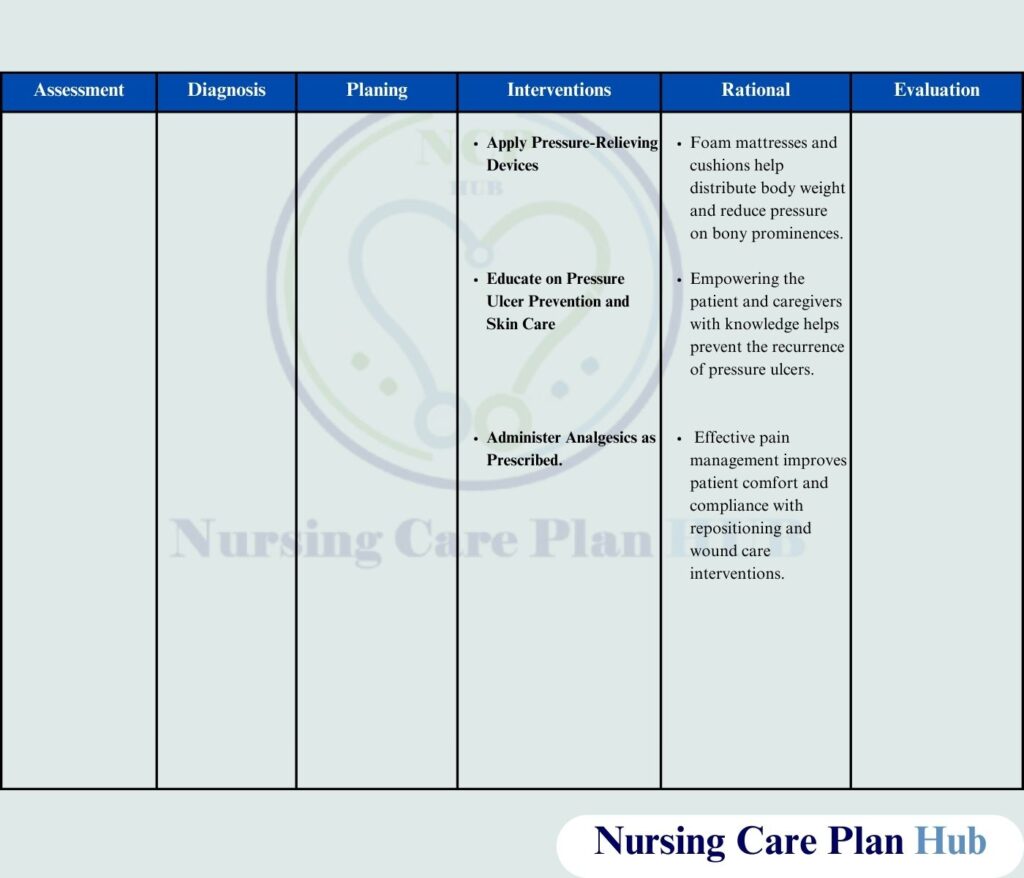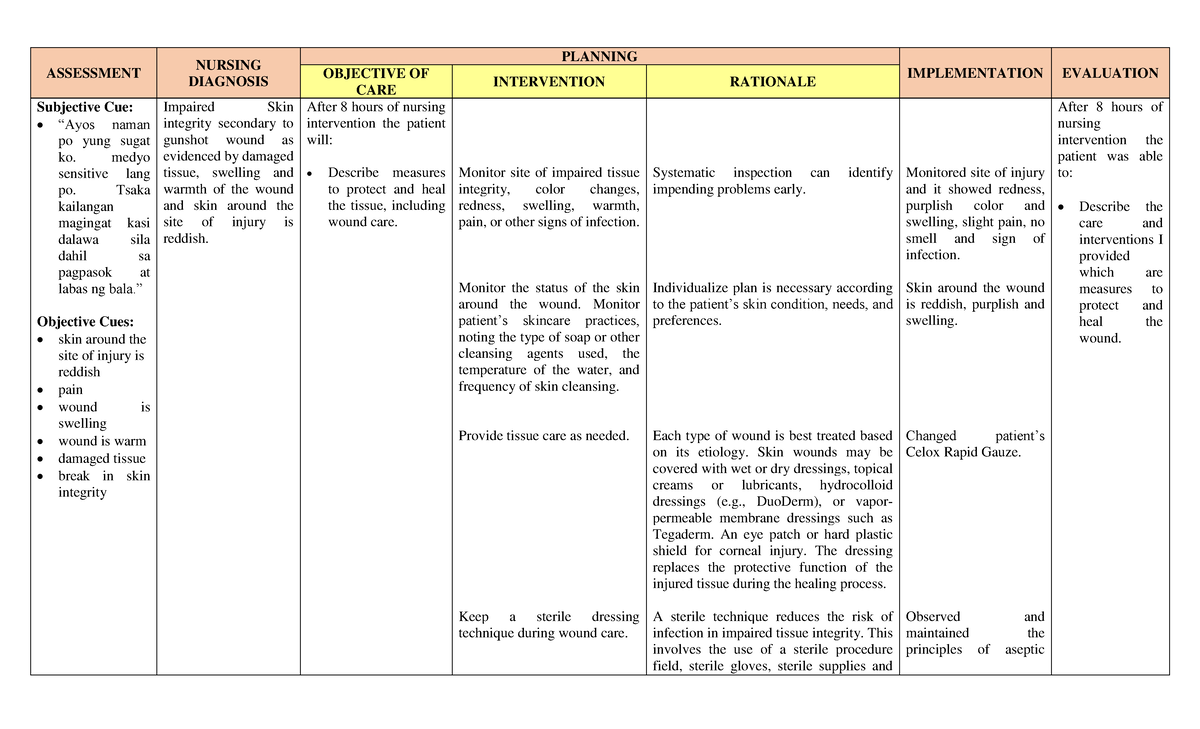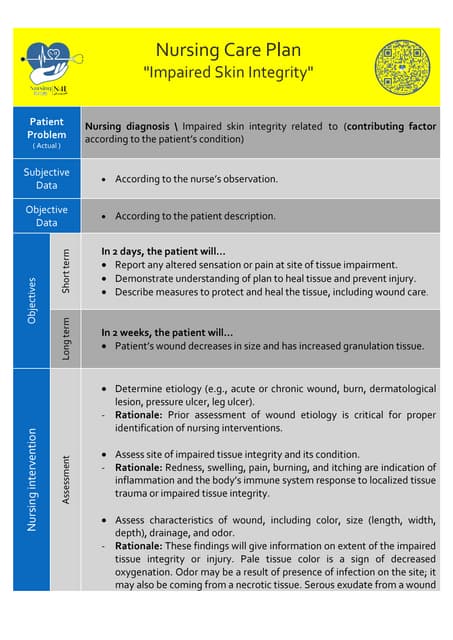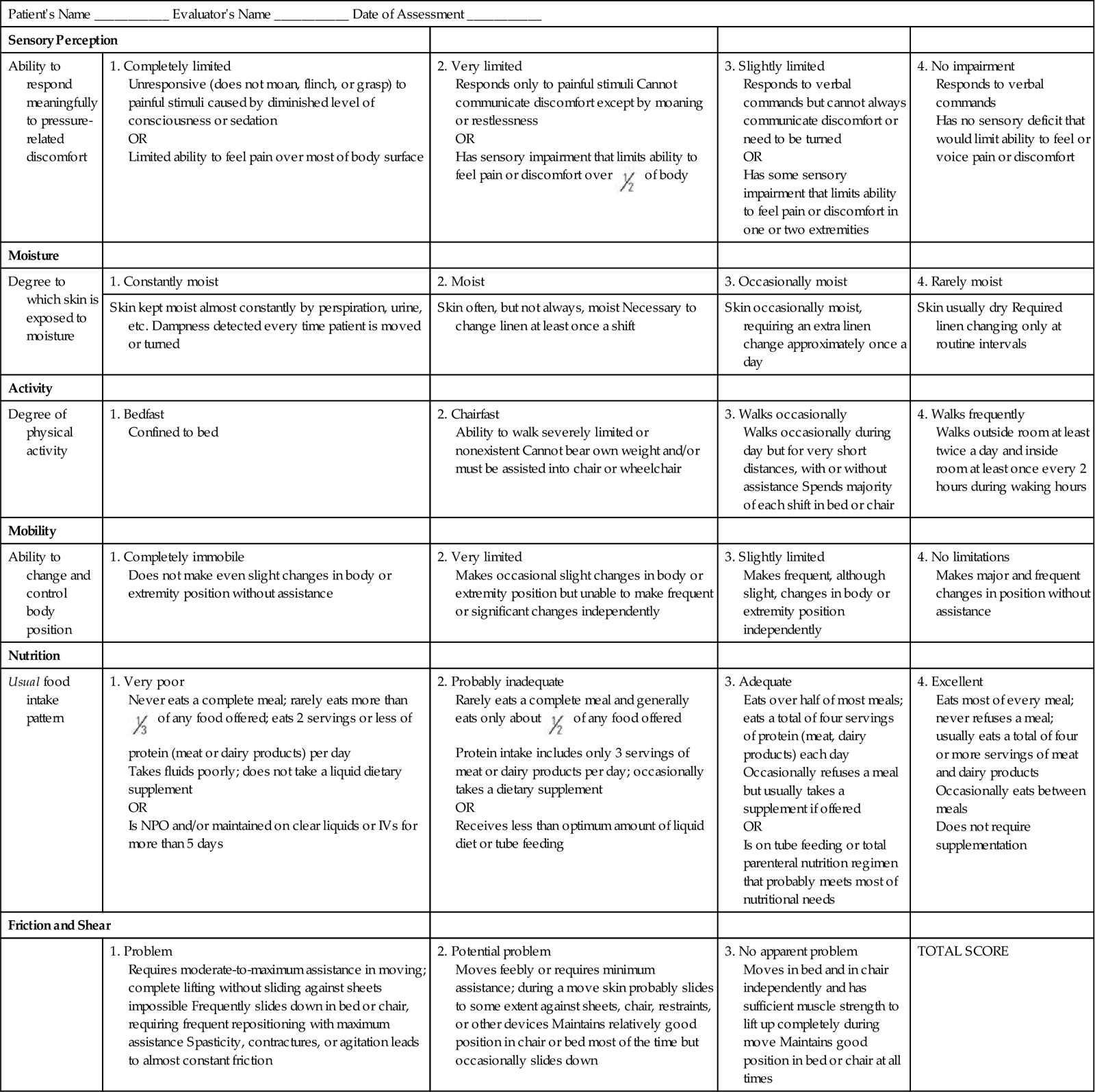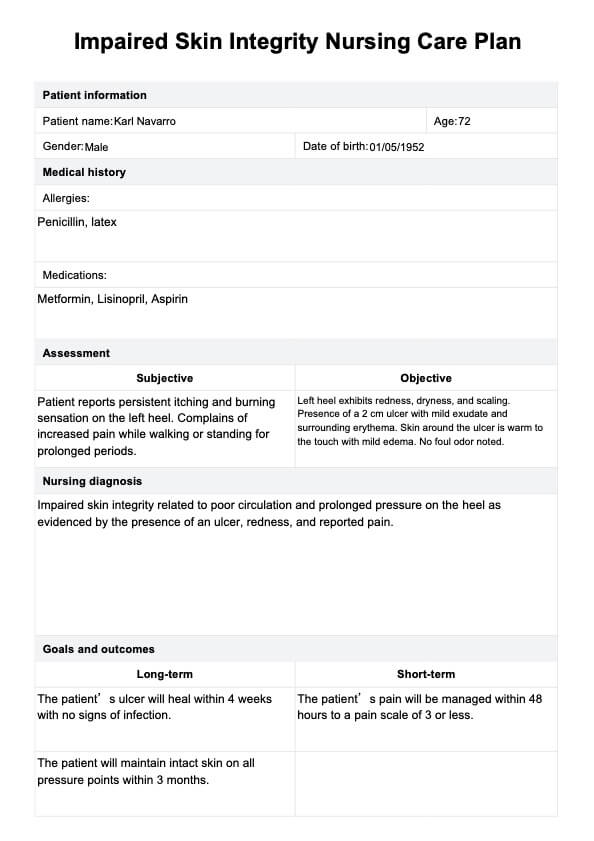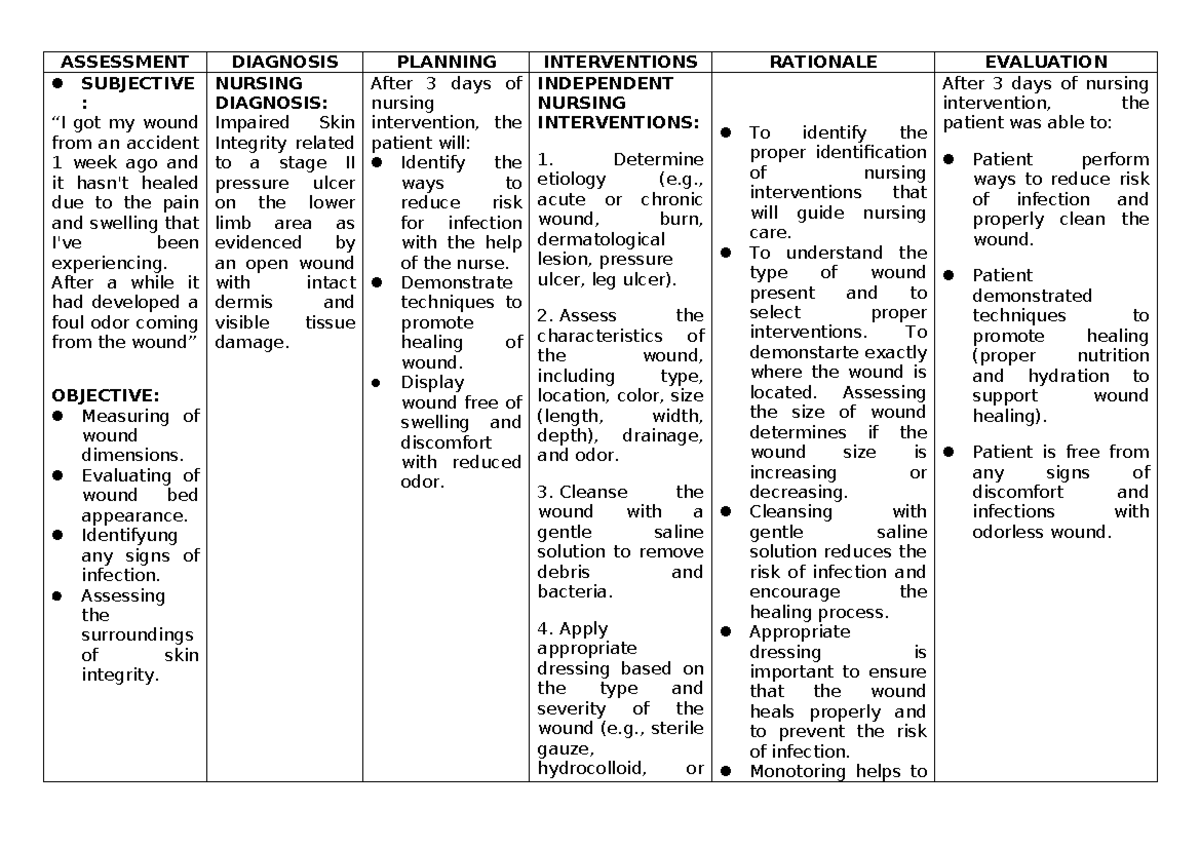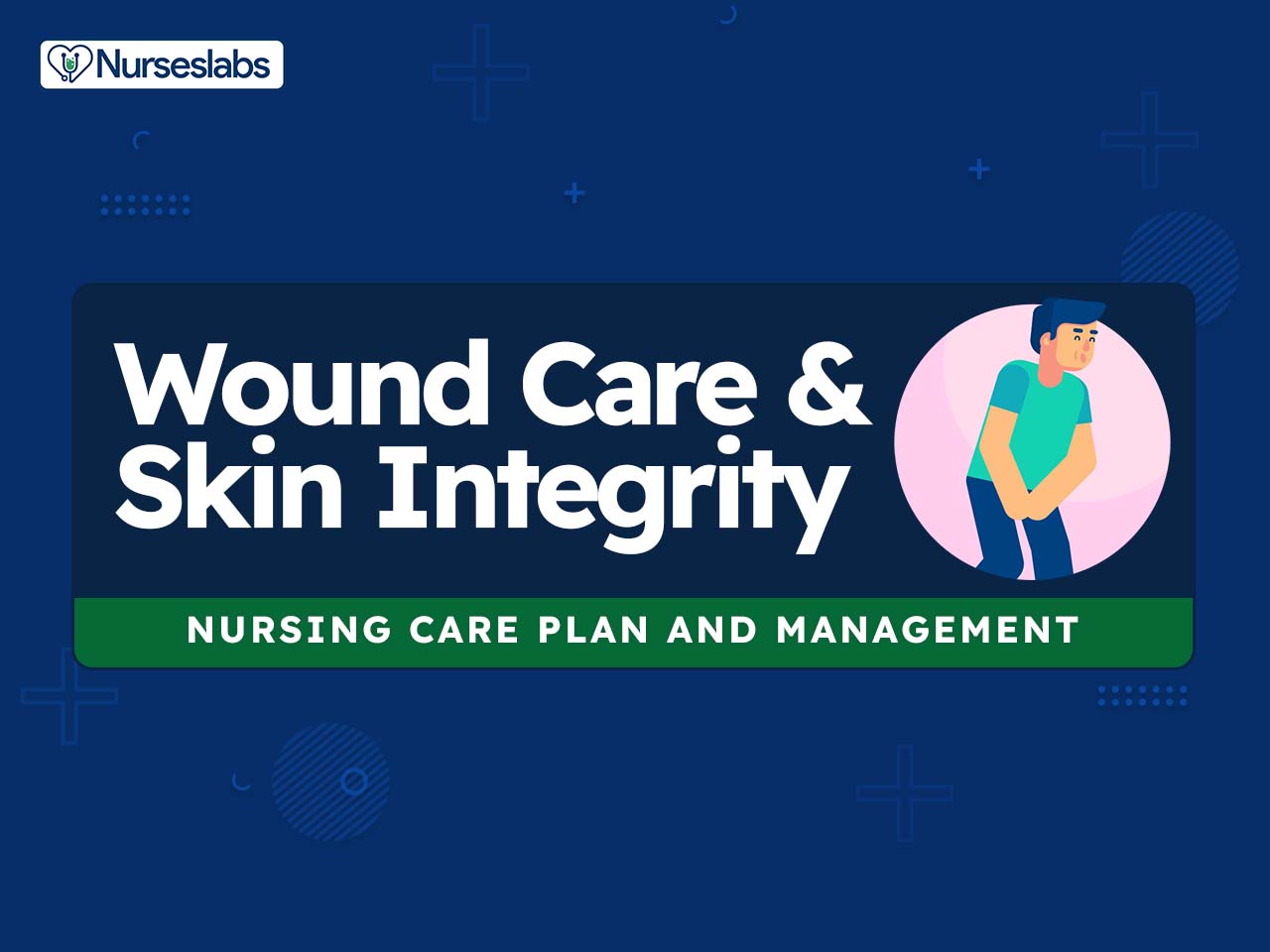Nursing Care Plan For Impaired Skin Integrity

The complexities of healthcare often extend beyond treating illness to encompass comprehensive patient care, with skin integrity playing a critical role in overall well-being. A well-structured Nursing Care Plan for Impaired Skin Integrity is a vital tool in preventing and managing conditions that threaten this crucial protective barrier.
This article will explore the significance of these plans, their components, and their potential impact on patient outcomes.
Understanding Impaired Skin Integrity
Impaired skin integrity refers to damage or disruption to the normal structure and function of the skin. This can range from minor abrasions and pressure ulcers (bedsores) to surgical wounds and burns. Understanding the causes and risk factors associated with impaired skin is essential for developing effective prevention and treatment strategies.
Common Causes and Risk Factors
Several factors can contribute to impaired skin integrity. These include prolonged pressure, friction, and shear forces, often seen in patients with limited mobility. Other risk factors involve poor nutrition, dehydration, incontinence, age, and underlying medical conditions like diabetes and vascular disease.
Identifying these risks is the first step in creating a tailored nursing care plan.
The Nursing Care Plan: A Detailed Approach
A Nursing Care Plan for Impaired Skin Integrity is a comprehensive document that outlines the nursing interventions required to prevent further damage, promote healing, and manage any associated complications. These plans are individualized to meet the specific needs of each patient.
Key elements include assessment, diagnosis, planning, implementation, and evaluation.
Assessment: Identifying the Problem
The initial assessment is crucial for determining the extent of skin damage and identifying contributing factors. This includes a thorough examination of the skin, paying close attention to pressure points, bony prominences, and areas exposed to moisture. The assessment also involves gathering information about the patient's medical history, medications, nutritional status, and mobility.
Braden Scale is commonly used. This tool helps in assessing the risk for pressure ulcers, considering factors like sensory perception, moisture, activity, mobility, nutrition, and friction/shear.
Diagnosis: Defining the Need
Based on the assessment findings, the nurse formulates a nursing diagnosis related to impaired skin integrity. Common diagnoses include "Risk for Impaired Skin Integrity," "Impaired Skin Integrity," or "Impaired Tissue Integrity." The diagnosis provides a clear statement of the patient's problem and guides the development of specific interventions.
Accurate diagnosis is essential for effective care planning.
Planning: Setting Goals and Outcomes
The planning phase involves establishing realistic and measurable goals for the patient. These goals should focus on preventing further skin breakdown, promoting wound healing, and managing pain. Examples of goals include "The patient will exhibit no new areas of skin breakdown during hospitalization" or "The patient's wound will decrease in size by 50% within two weeks."
These goals must be achievable and patient-centered.
Implementation: Putting the Plan into Action
Implementation involves carrying out the specific nursing interventions outlined in the care plan. These interventions may include repositioning the patient frequently to relieve pressure, providing meticulous skin care, managing incontinence, ensuring adequate nutrition and hydration, and applying appropriate wound dressings.
Proper technique and consistency are crucial for success. Repositioning should occur at least every two hours for bedridden patients.
Evaluation: Measuring Progress and Adjusting the Plan
The final step in the nursing process is evaluation, which involves assessing the effectiveness of the interventions and making necessary adjustments to the care plan. This requires ongoing monitoring of the patient's skin condition, wound healing progress, and pain levels. If the goals are not being met, the nurse must reassess the patient, identify any barriers to healing, and modify the interventions accordingly.
Regular evaluation ensures that the plan remains effective.
The Impact of Effective Nursing Care Plans
Effective Nursing Care Plans for Impaired Skin Integrity have a profound impact on patient outcomes. By preventing and managing skin breakdown, these plans can reduce pain, prevent infection, shorten hospital stays, and improve the patient's overall quality of life. These plans can also significantly decrease healthcare costs associated with treating pressure ulcers and other skin-related complications.
A study published in the Journal of Wound, Ostomy, and Continence Nursing highlighted the correlation between comprehensive care plans and improved wound healing rates. Proper implementation of the plan leads to improvement of patient outcome.
Challenges and Future Directions
Despite the importance of these care plans, several challenges can hinder their effective implementation. These include inadequate staffing levels, lack of training and resources, and poor communication among healthcare providers. Future directions in this area include the development of advanced wound care technologies, the implementation of electronic health records to facilitate care planning, and the promotion of interprofessional collaboration to ensure comprehensive patient care.
Improved training and resource allocation are crucial.
The Nursing Care Plan for Impaired Skin Integrity is an indispensable tool in modern healthcare. It emphasizes a proactive and patient-centered approach to prevent and manage skin breakdown. The focus on individualized assessment, evidence-based interventions, and continuous evaluation ensures that patients receive the best possible care, promoting healing, and enhancing their overall well-being. These measures have far-reaching effects that positively impact both patients and healthcare systems.


